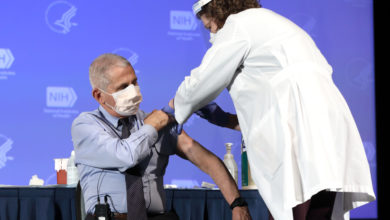Trigger Warnings Will Destroy Us ALL! (or not)

Trigger Warning: infant death, graphic description of fetal tissue
There is this man who stands a block from the entrance to my workplace. He props up two four-foot signs emblazoned with photographs of bloody, dead, micro-preemie babies, and another with the words “Stop Abortion Now!”
I say “babies” despite knowing that these are fetuses, despite knowing only 1.2% of abortions are late term and it is manipulative to imply that these images represent all abortions. But I still think “babies,” when I see those signs because they look so much like my children did when I first saw them in the NICU after being born at 24 weeks, only they are broken, and bloody, and dead.
When I see this man on my drive home, I have to pull over because it hits me at once. In an instant, I can smell the hospital, hear the alarms and feel the smooth wall of the isolette on my forehead as I lean against it to watch my tiny babies inside. And I can’t drive, talk, or breathe until the memory assault slowly fades.
It is exhausting, and I try my damndest to avoid it.
On the way to work, driving by him is less challenging because I’m not as tired. But, there are only two exits and it’s a crapshoot which one he will stand at on any given day, so I approach my car at the end of my shift with hard knot of worry in case I happen to choose the wrong exit.
I’m working on getting rid of these flashbacks and moments of incapacitation, so in the future a stranger’s choices don’t ruin my day. But for now, they do.
I held off asking for help with this for a long time. Part of this is because I’m busy. Part is because my doctor is at a military treatment facility where I sit in the waiting room side by side with service members who have been in combat and seen and done truly traumatic things.
I thought that my experience was a pale ghost of the awful they endured. How dare I think I needed or deserved the same help they got? But, eventually I made an appointment.
And there, in a facility that treated people who had PTSD acquired at war, no one acted as if I was weak for not being able to suck it up, or coddled for wanting to avoid images that triggered panicky moments. No one used infantile language such as “swaddled” to describe my inability to get through a routine daily activity when confronted by images that triggered memories that overwhelmed me.
The contrast is profound between the attitude shown by military treatment facility staff, and the callous indifference towards students dealing with similar struggles that drives several recent articles railing against trigger warnings.
Instead of seeing trigger warnings as a gracious way to allow students who have experienced trauma to participate in learning without re-invoking that trauma, these articles have inflated and demonized trigger warnings into harbingers of the end of rational thought and of education itself.
Frankly, I could not imagine how difficult it would be to face the academic version of my man with signs: to be in a classroom, where my attendance and participation were directly tied to my academic fate, and to have no warning before encountering the thing that draws out my worst fears.
This spate of articles have rounded up a host of anecdotal evidence, tangentially related study data, and cherry picked opinion to say students at universities have been coddled or are weak because some schools offer students a heads up that topics may be tough. Writers equate that heads up with suppression of free speech, falsely entwining two completely different ideas.
Academic David Banks explains, if trigger warnings are used by a university to control class topics, professors need to look to “the dynamics of the administrative tactics. . . that use parents and students’ complaints to strengthen their control over what is taught and who does the teaching.”
Trigger warnings don’t prevent anyone from talking about the hard topics. They just allow them to do so with the added kindness of warning listeners who need it.
Ella Dawson explains the intentional grace of trigger warnings from a student perspective:
“My friends and I use trigger warnings as a display of respect for each other’s difficult experiences and to engage with challenging content when we are best equipped to do so. . .Trigger warnings allow me to manage that dark corner of my carefully compartmentalized brain, opening up the trap door to difficult topics only when I am best suited to do so. They aren’t avoidance, they’re about intentional engagement.”
Instructor Sean Trainor explains how this works in the classroom, saying that an
“educators’ job, after all, is not to surprise, humiliate, and traumatize their students, but rather teach them how to navigate these challenges with maturity and competence. Contrary to Lukianoff and Haidt’s belief, warning students about disturbing material actually helps, rather than hinders, in this process.”
Professor Aaron Hanlen observes that the concern over trigger warnings is misplaced “if we used trigger warnings to say, effectively, “don’t read this, it’s scary,” then there’d be no need to warn in the first place; we’d just leave the material off the syllabus.”

What disgusts me most about the the anti-trigger warning articles are how they vilify students who need them for destroying free thought and the American education system, while simultaneously proclaiming a desire to protect students.
In doing so, the articles become just another reheating of the tired old argument that “kids-these-days are the worst and their (insert fatal flaw here) will be the destruction of us all,” with a dash of “we only say this because we care.”
The article in the Atlantic mentions that trigger warnings are invalid because they mean professors make assumptions about what will trigger a student’s memories, but almost immediately after saying this, the article explains that
“students with PTSD should of course get treatment, but they should not try to avoid normal life. . . Classroom discussions are safe places to be exposed to incidental reminders of trauma. . . A discussion of violence is unlikely to be followed by actual violence, so it is a good way to help students change the associations that are causing them discomfort.”
So, the authors don’t want us to make assumptions about how people will react to a topic, and then proceed to make the assumption that exposure in a classroom environment is precisely what all victims of trauma need.
Even if we agree that classrooms are always safe spaces, the assumption that this means all who have experienced trauma should immediately be cool with encountering memories of that trauma without warning is a huge insensitive stretch.
You don’t sign up for counseling one day, and drive blithely by pictures that trigger you the next. Expecting students who struggle with triggers to face them no matter where they are in the process of dealing with their past is a special sort of unreasonable.
This line of logic is indicative of another major problem with the Atlantic and similar articles: the assumption that the writers know better than the professors and students themselves what they can and can’t handle. As Rowan Kaiser at the Daily Beast says “Questions of effective mental health care are for experts and sufferers to deal with individually, not commentators to make sweeping claims about from afar. ”
But the Atlantic (and similar articles) doesn’t stop there; it tosses in a little the-real-world-is-tough for good measure, saying “and they’d better get their habituation done in college, because the world beyond college will be far less willing to accommodate requests for trigger warnings and opt-outs.”
Ironically, the world beyond college is already doing exactly that because the world beyond college is not populated entirely by assholes.
As even the article admits, trigger warnings are common online. Since the web is where many of us get most of our news, carry on most of our discussions, and live much of our social lives, it’s an easy example of how this world beyond college is very willing to accommodate requests for trigger warnings.
If anything, trigger warnings on college campuses are one way these schools are trying to catch up to the norms in the world beyond college.
The article in the Atlantic is off base as are the many that have popped up to ride its coat tails. It misunderstands trigger warnings and misuses them to make a greater point unrelated to them. I am hopeful that the hullaballoo it caused will die down and professors will continue quietly doing the decent thing that many have always done, and provide a little heads up if they think students might need it.
Featured image by Robert Couse-Baker, on flickr.





It seems to me that trigger warnings (or content notes) are the least one can do when bringing up topics that one can reasonably expect will be traumatic for some students.
I’m reminded of an argument I had with a professor who had posted an article on your sister site School of Doubt back in June.
He was planning to discuss evo psych theories about rape, in order to show how science (and scientific controversies) are relevant to their lives and to teach something about evolution, or something. But he was afraid that “in the current hypersensitive climate” he might get into trouble for it.
I suggested that he _should_ consider how it might come across to his students and perhaps choose a different example, given that it was likely that some of his students might have been raped, and in any case, given rape culture, a male authority figure discussing justifications for rape might come across as creepy, or at least ignoring his own privilege.
I got nowhere.
By now, I presume that anyone who is dismissive or derisive of trigger warnings is simply trying to defend his (it’s usually a him) “right” to not consider the worries of lesser beings.